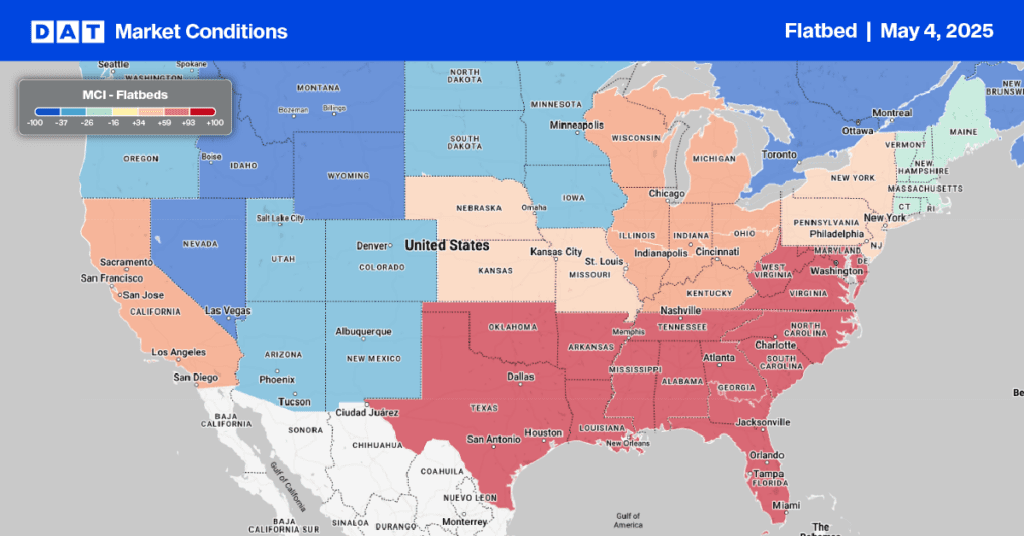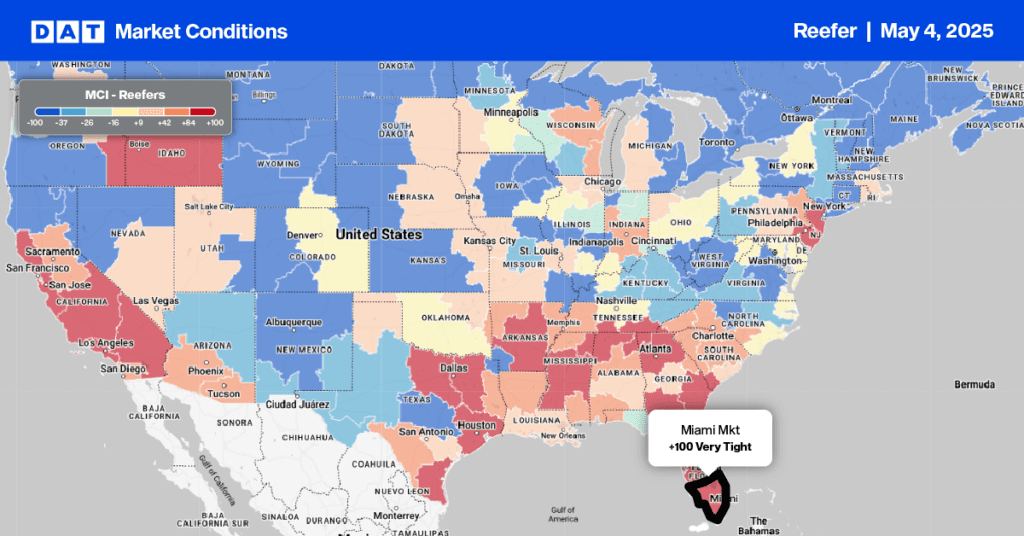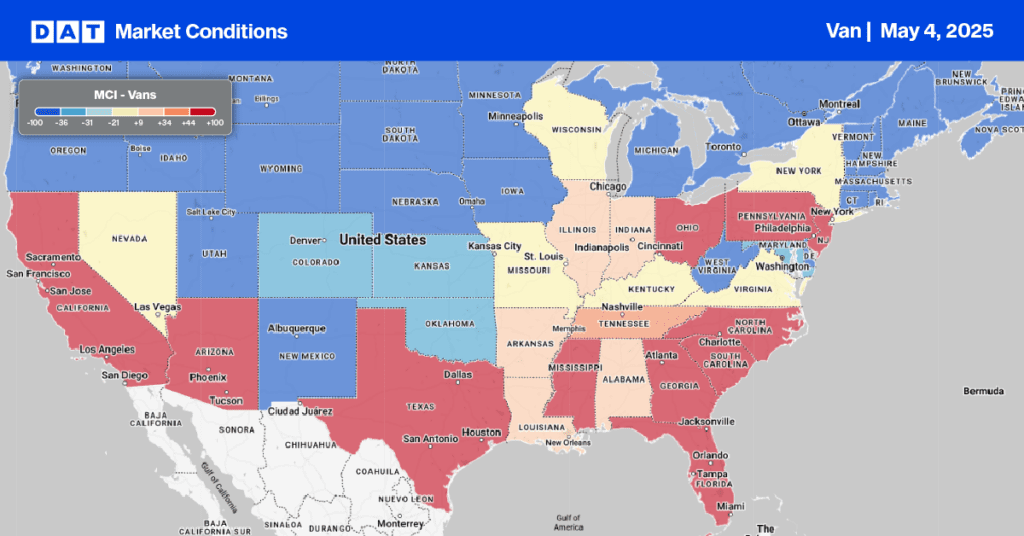The wild blueberry season winds down in Maine, pumpkins roll into farmstands around the country, the sugarbeet harvest wraps up in Minnesota, potatoes are dug up, processed, shipped, and stored in Idaho and Prince Edward Island (PEI), apples are picked in Washington State and also imported from China, and watermelon season runs out of juice. Strawberries are also planted in Florida ahead of peak shipping season in February, which coincides with the Plant City Strawberry Festival each year. A lot is going on, and not much time to do it.
For carriers, it’s an important time of the year as volumes quickly shift.
October also signals the seasonal transition and shift where our fruit and vegetables are grown and hauled. The over-arching trend is from traditional domestic produce growing regions to either warmer southern latitudes or port markets such as Los Angeles or Philadelphia, where imports start to flood in.
- Avocados from Peru and Mexico start arriving leading up to Super Bowl Sunday – limes squeeze in an appearance also.
- Chile and Peru start shipping grapes to the U.S. mainly via the Port of Philadelphia.
- Peru floods the market with blueberries.
- Lettuce production moves from Salinas, CA, to Yuma, AZ, aka the Winter Salad Bowl, where 90% of leafy greens are produced during winter, and
- Mexican tomatoes start arriving in solid numbers from now until May via commercial border crossing zones in Pharr, TX, and Nogales, AZ.
Hurricane season has a significant impact on Fall produce.
Hurricane season also plays a role in production volumes and yields, and the humble tomato is besieged by severe weather at the moment. Rain from Hurricane Ian drenched many tomato fields in central Florida, with damage assessments still underway. In Mexico, rainfall from Kay and Orlene delayed tomato production in Baja, California, and damaged existing tomato fields. Tropical Storm Julia will also impact the imports of rambutan and large papaya from Guatemala and Mexico.
Will we see a shortage of pumpkins this Halloween?
It depends on which state you live in. The 2022 commercial Midwest Region pumpkin crop was delayed by around ten days this year due to heavy rains in all the growing regions. Still, since then, volumes have been steady and although growers expect yields to remain this way thru October, there are concerns a dryer summer may decrease total volumes by Halloween. In Morton, IL, known unofficially as the “Pumpkin Capital of the World,” harvesting crews said they’re noticing no record-breaking yields this year but were comfortable there are enough acres contracted to be able to meet the demand of the market, according to David Uhlman, a pumpkin farmer from Tremont, IL.
According to John Ackerman, who’s been growing pumpkins on his Morton, IL, farm since 1983, “Pumpkins are a fickle plant. The vines are along the ground, so when it’s too wet, there’s a much greater chance they’ll get a disease or fungus,” he said. “The timing of rain also makes quite a difference with pumpkins. Sometimes you have a good crop, but then it rains, and once in a while, it triggers the pumpkin plant to abort fruit.”
The story is very different in Texas, where pumpkin producers experienced a second sub-par season in a row, as drought conditions led to lower yields, according to Texas A&M AgriLife Extension Service experts. Mark Carroll, AgriLife Extension agriculture agent in Floyd County, said drought contributed to below-average yields. However, many fields performed better than in 2021, when too much rain led to yields 30% below average. Boggy conditions made it impossible for producers to enter fields to manage the crop effectively in 2021, and yields suffered.
What can brokers and carriers expect this Halloween?
According to National Retail Federation (NRF) Halloween Survey, Halloween-related activities will resume pre-pandemic levels, with 69% of consumers planning to celebrate the holiday this year, up from 65% in 2021 and 68% in 2019. Higher participation levels are expected to boost sales to a record $10.6 billion, exceeding last year’s $10.1 billion. This should translate into higher freight volumes for carriers, primarily regional reefer carriers, where ornamental pumpkins will be in demand in the week before Halloween.


